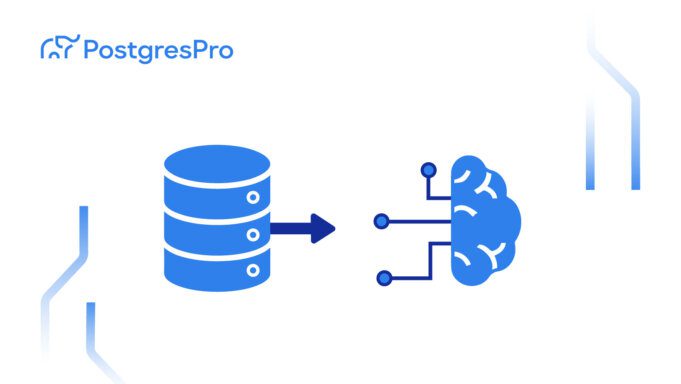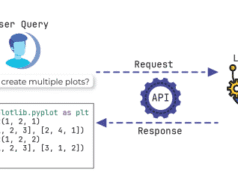The Challenge: Why Simple LLM SQL Generation Fails
The vision seems straightforward: describe what data you need in plain English, and an LLM generates perfect SQL. Reality is more complex:
Critical Barriers to Production SQL Generation
| Challenge | Impact | Why It Matters |
|---|---|---|
| Data Security | Cannot send sensitive schemas to external APIs | Feeding database structure to OpenAI violates compliance requirements |
| Infrastructure Cost | Self-hosting requires expensive GPUs | Running production-grade models locally strains budgets |
| Dialect Specialization | Open-source models struggle with niche SQL variants | PostgreSQL, T-SQL, BigQuery have unique syntax requirements |
| Context Complexity | Poor performance on poorly structured schemas | Real-world databases lack clean documentation |
| Grammar Enforcement | Difficult to develop and debug constrained decoding | Models generate syntactically invalid SQL |
Despite these hurdles, recent approaches have achieved impressive results on industry benchmarks like Spider and BIRD, which test SQL generation across diverse database schemas and query complexity levels.
State-of-the-Art Approaches: Multi-Pipeline Systems
CHASE-SQL: Parallel Pipeline Selection
CHASE-SQL combines multiple SQL generation techniques running in parallel pipelines. A selector model evaluates all outputs and chooses the best answer. The system incorporates:
- Advanced prompt engineering: Multiple prompt strategies generate diverse candidates
- Self-reflection: Models analyze their own outputs to identify and fix syntax errors
- Ensemble selection: Voting mechanism across pipeline results
Trade-off: Prioritizes benchmark accuracy over accessibility and speed—requires significant compute resources for parallel pipelines.
SQLFuse: Modular Pipeline Architecture
SQLFuse integrates prompt engineering, multi-module pipelines, and fine-tuning across four specialized modules:
- Schema Mining: Crafts context including table structures, column definitions, constraints, and relationships
- Schema Linking: Uses a specialized trained LLM to identify relevant columns and tables for the query
- SQL Generation: Core model equipped with curated context and user question generates SQL
- SQL Critic: Validation module reviews generated SQL for logical and syntactic errors
SkyRL-SQL: Multi-Step Reinforcement Learning
SkyRL-SQL trains a base model using Reinforcement Learning (RL) to solve tasks in multiple sequential steps. This approach shares conceptual similarities with the GGPO method detailed later, demonstrating that RL effectively optimizes for execution accuracy rather than just syntactic correctness.
The combination of model fine-tuning, sophisticated context creation, and multi-stage validation pipelines contributes to the stability and production viability of these SQL generation systems.
Why Supervised Fine-Tuning Falls Short for SQL
Supervised Fine-Tuning (SFT), training models on input-output pairs, is the default approach for many tasks. For SQL generation, it has fundamental limitations:
SFT Problems for Long Reasoning Tasks
- Lack of Reasoning Datasets: SQL requires multi-step logical reasoning (schema selection → join logic → aggregation → filtering). Training data rarely captures this reasoning process explicitly.
- Misalignment with End Goals: SFT optimizes for producing text that looks like the training examples, not for generating SQL that executes correctly and returns accurate results.
- Writing Quality ≠ Problem Solving: SFT can improve syntactic quality without improving semantic correctness. A query can be beautifully formatted but return wrong results.
The “Reverse-Mining” Chain of Thought Problem
A common practice involves “reverse-mining” the Chain of Thought (CoT)—having a model reconstruct the reasoning behind a given correct answer. This approach is problematic:
- Expensive: Requires running inference on every training example to generate reasoning chains
- Logically Inconsistent: Models often fabricate plausible-sounding but incorrect reasoning that happens to reach the right answer
- Prior Knowledge Leakage: Hints in prompts allow models to guess answers without genuine reasoning, then backfill explanations
These limitations mean SFT alone cannot reliably produce models that execute complex SQL queries correctly on novel database schemas.
Reinforcement Learning: Optimizing for Execution Accuracy
Reinforcement Learning (RL) offers a fundamentally different approach that directly optimizes for what matters: does the SQL query execute successfully and return correct results?
How RL Works for SQL Generation
The Core Concept: Treat the model as a policy that selects actions (generates tokens) to maximize a reward (passing unit tests, returning correct results, receiving positive user ratings).
Key Advantages:
- Direct Optimization: Trains for execution accuracy, not text similarity to training examples
- Real Feedback: Rewards based on whether queries actually work when run against databases
- Multi-Step Reasoning: Model learns strategies for complex queries through trial and reward
- Self-Correction: RL naturally encourages exploration of alternatives when initial approaches fail
The Training Loop:
- Model generates SQL query for a natural language question
- Query executes against database (or simulated environment)
- Reward signal based on execution success and result correctness
- Model weights update to increase probability of actions that led to high rewards
- Process repeats across thousands of examples
Unlike SFT, which only sees successful examples, RL learns from failures. The model discovers through experience which schema elements matter, how to construct joins, when to use aggregations, and how to filter results effectively.
GGPO: Grammar-Guided Policy Optimization
The breakthrough approach combines RL with grammar-based constrained decoding, creating Grammar-Guided Policy Optimization (GGPO).
The GGPO Framework
Key Innovation: Integrate Grammar Based Neural Fuzzer (GBNF) grammar into sampling parameters in vLLM, preventing generation of syntactically incorrect SQL.
How It Works:
- Grammar Constraint: GBNF grammar defines valid SQL syntax for target dialect
- Guided Decoding: During generation, model can only select tokens that maintain syntactic validity
- RL Training: Model learns to maximize execution accuracy within grammar constraints
- Guaranteed Syntax: Output is always parseable SQL—no syntax errors possible
Why This Combination Matters:
Traditional RL for text generation can explore invalid syntax, wasting training time on queries that fail to parse. GGPO ensures every generated query is syntactically valid, focusing RL exploration on semantic correctness—choosing right tables, joins, filters, and aggregations.
Results: 33% Improvement on Challenging Queries
Fine-tuning the Qwen3-0.6B model using GGPO (referred to as GSPO in the research) produced significant improvements:
| Category | Sample Size | BASE Accuracy | FT Accuracy | Improvement | Statistical Significance |
|---|---|---|---|---|---|
| Simple | N=148 | 24.055 ± 1.964 | 23.807 ± 2.021 | −1.03% | ✖ (p=0.636) |
| Moderate | N=250 | 6.627 ± 1.006 | 6.053 ± 0.865 | −8.65% | ✖ (p=0.023) |
| Challenging | N=102 | 2.744 ± 1.322 | 3.659 ± 1.285 | +33.33% | ✅ (p=0.011) |
| Total | N=500 | 10.993 ± 0.797 | 10.820 ± 0.846 | −1.58% | ✖ (p=0.440) |
Interpreting the Results
Why challenging queries improved while simple queries didn’t:
- Simple queries: Both models already perform well (~24% accuracy). Little room for improvement.
- Moderate queries: Slight decline suggests model may be overfitting to complex patterns at expense of middle-tier queries.
- Challenging queries: Dramatic improvement (2.744 → 3.659) demonstrates RL’s strength—learning multi-step reasoning for complex joins, subqueries, and aggregations.
The validation set showed approximately 11% overall improvement, with the real gains concentrated where they matter most: queries that traditionally stump SQL generation systems.
Example Queries: From Simple to Challenging
Simple Queries (Single Table, Basic Operations)
Q: How many heads of the departments are older than 56?
SELECT COUNT(*) FROM head WHERE age > 56Q: List the creation year, name, and budget of each department.
SELECT creation, name, budget_in_billions FROM departmentQ: What is the maximum and minimum budget of the departments?
SELECT MAX(budget_in_billions), MIN(budget_in_billions) FROM departmentModerate Queries (Joins, Aggregations, Date Functions)
Q: In 2012, who had the least consumption in LAM segment?
SELECT T1.CustomerID
FROM customers AS T1
INNER JOIN yearmonth AS T2 ON T1.CustomerID = T2.CustomerID
WHERE T1.Segment = 'LAM'
AND SUBSTR(T2.Date, 1, 4) = '2012'
GROUP BY T1.CustomerID
ORDER BY SUM(T2.Consumption) ASC
LIMIT 1Q: Average monthly consumption of SME customers in 2013?
SELECT AVG(T2.Consumption) / 12
FROM customers AS T1
INNER JOIN yearmonth AS T2 ON T1.CustomerID = T2.CustomerID
WHERE SUBSTR(T2.Date, 1, 4) = '2013'
AND T1.Segment = 'SME'Challenging Queries (Complex Logic, Case Statements, Multiple Joins)
Q: What is the ratio of customers who pay in EUR vs. CZK?
SELECT CAST(SUM(CASE WHEN Currency='EUR' THEN 1 ELSE 0 END) AS DOUBLE) /
SUM(CASE WHEN Currency='CZK' THEN 1 ELSE 0 END)
FROM customersQ: Difference in gas consumption between CZK and EUR customers in 2012?
SELECT SUM(CASE WHEN T1.Currency='CZK' THEN T2.Consumption ELSE 0 END) -
SUM(CASE WHEN T1.Currency='EUR' THEN T2.Consumption ELSE 0 END)
FROM customers AS T1
INNER JOIN yearmonth AS T2 ON T1.CustomerID = T2.CustomerID
WHERE SUBSTR(T2.Date, 1, 4) = '2012'Q: Which year recorded the most gas consumption paid in CZK?
SELECT SUBSTR(T2.Date, 1, 4)
FROM customers AS T1
INNER JOIN yearmonth AS T2 ON T1.CustomerID = T2.CustomerID
WHERE T1.Currency = 'CZK'
GROUP BY SUBSTR(T2.Date, 1, 4)
ORDER BY SUM(T2.Consumption) DESC
LIMIT 1Future Improvements and Research Directions
Several strategies can further enhance GGPO performance:
Two-Stage Fine-Tuning
Implement preliminary SFT on reasoning datasets before applying RL. This gives the model a stronger baseline for understanding SQL structure, then RL refines for execution accuracy.
Rationale: SFT establishes syntactic foundations; RL optimizes semantic correctness. Together, they address both aspects effectively.
Dataset Calibration
Calibrate training dataset for more uniform distribution across difficulty levels. Current results show model improves on challenging queries but regresses slightly on moderate ones—suggesting dataset skew.
Approach: Oversample moderate-difficulty examples or use curriculum learning that progressively introduces complexity.
Architectural Improvements
- Increase LoRA Rank: Higher-rank Low-Rank Adaptation captures more complex patterns without full fine-tuning costs
- Extend Training Time: More RL episodes allow deeper exploration of query space
- Enhanced Grammar Integration: Refine GBNF grammar to handle edge cases and dialect-specific syntax
- Multi-Dialect Support: Train separate grammar-guided models for PostgreSQL, MySQL, T-SQL, BigQuery
Key Takeaways
Why GGPO Works:
- Grammar Constraints: Guarantee syntactic correctness, eliminating entire class of errors
- RL Optimization: Directly optimizes for execution accuracy, not text similarity
- Focused Learning: Model explores semantic space (right tables, joins, filters) not syntax space
- Challenging Query Strength: 33% improvement where traditional approaches fail most
- Statistical Significance: Hedges’ g of +0.692 confirms real, reproducible gains
Production Implications:
- Smaller models (0.6B parameters) can achieve strong results with proper training
- Self-hosting becomes viable without massive GPU infrastructure
- Grammar-guided approach prevents embarrassing syntax errors in production
- RL naturally handles dialect-specific quirks through reward signals
- Two-stage training (SFT + RL) offers path to further improvements
The combination of grammar-guided decoding and reinforcement learning represents a fundamental advancement in LLM SQL generation. By constraining syntax through GBNF grammars while optimizing for execution accuracy through RL, GGPO achieves what traditional supervised fine-tuning cannot: reliable performance on complex, real-world SQL queries. The 33% improvement on challenging queries demonstrates that this approach addresses exactly the cases where current systems fail most—multi-table joins, complex aggregations, and conditional logic. As organizations seek to deploy LLMs for SQL generation at scale, GGPO provides a blueprint for training smaller, specialized models that deliver production-grade accuracy without the security and cost concerns of external APIs.





